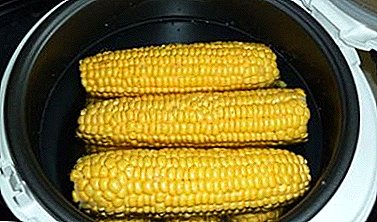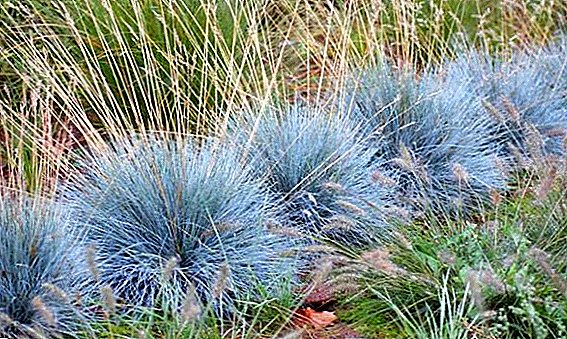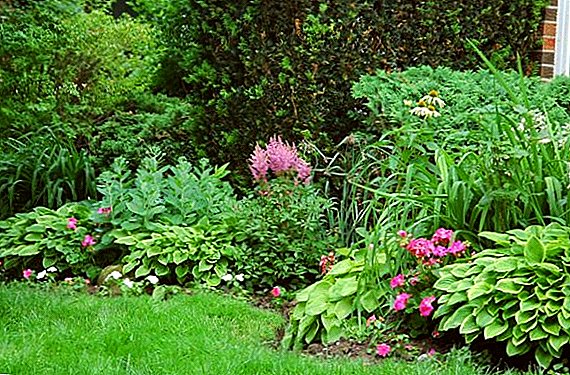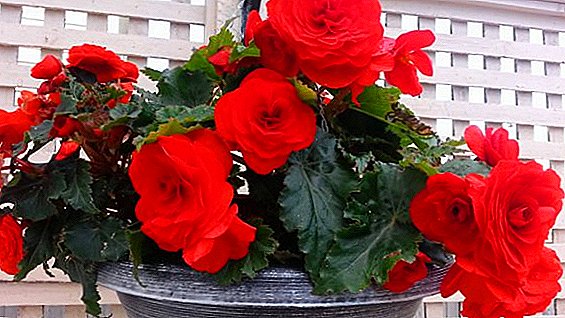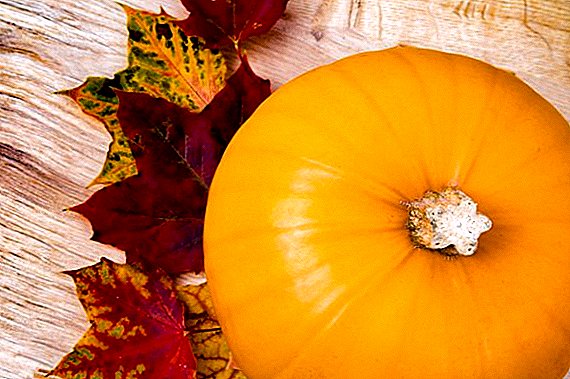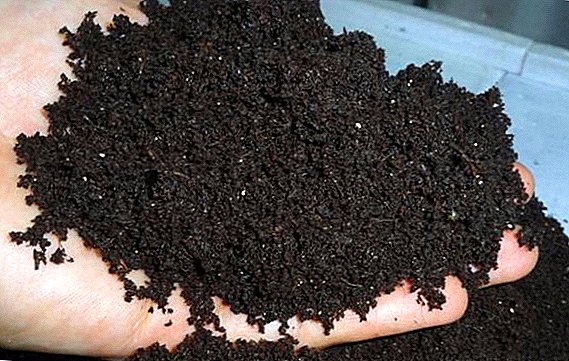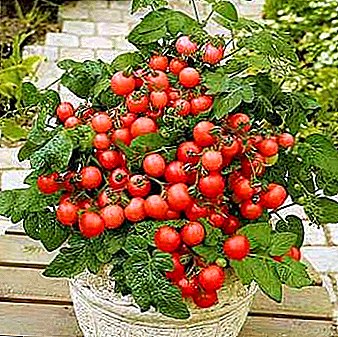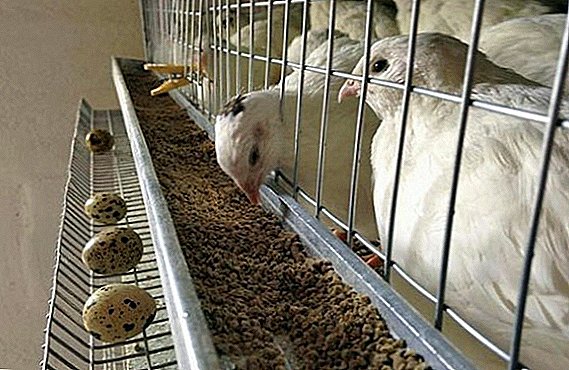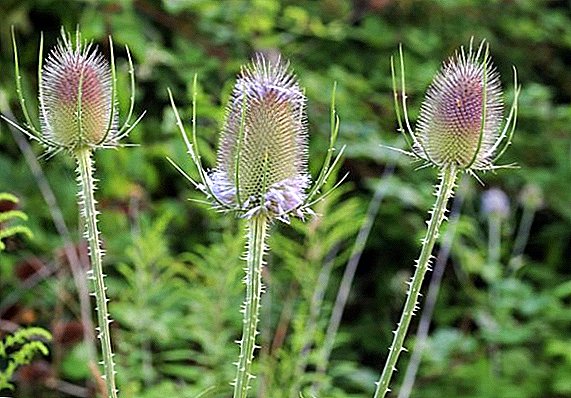 Not immediately, but you can guess that the name of the plant "teasel" comes from the word "pile". However, if you do not know in advance, it is almost impossible to guess that the properties of the pile are not related to the plant itself, but to the things that were once treated with it. Much clearer to the former functions of this grass is hinted at by its other name - a nap cone. After a prolonged lull due to the technical revolution that almost sent the teasel to resign, now this interesting plant is again in fashion, but this time thanks to its design qualities.
Not immediately, but you can guess that the name of the plant "teasel" comes from the word "pile". However, if you do not know in advance, it is almost impossible to guess that the properties of the pile are not related to the plant itself, but to the things that were once treated with it. Much clearer to the former functions of this grass is hinted at by its other name - a nap cone. After a prolonged lull due to the technical revolution that almost sent the teasel to resign, now this interesting plant is again in fashion, but this time thanks to its design qualities.
Botanical description
This herb is two years old or perennial, rising to the ground from one to two and a half meters with the help of stems covered with thorns or, depending on the species, a kind of bristles. Skin-like leaves are deeply incised and also have thorns. The teasel flowers are small but numerous and are colored with various shades from pale yellow to radically mauve.
Flowers, grouped into cone-shaped inflorescences, are placed on long peduncles, on which they bloom in waves, rising along a cone-spruce up and down. Flexible scales of bracts, equipped at the ends with hooks, and became the main tool for which textile workers in the past used them to impart hairiness to woolen fabrics. 
Did you know? Without the cones of this plant there would be no velvet, no flannel, no plush, no drape, or velveteen. Even high-tech metal analogs of the pile cones have not yet been able to completely replace it in the production of fabrics with pile.
Distribution and habitat
Growing up in its native places in Europe, Asia and North Africa, the teasel gradually reached both Americas, intermarried with Australia, New Zealand and even with South Africa.
Field species of teasel can now be found on arable land, wasteland, vegetable gardens, rivers and streams, forest edges, roadsides, meadows and glades. That is, it grows almost everywhere. The teasel, the sowing campaign, as the name suggests, grows where people sowed it.
Popular species of teasel
Although tireless breeders have already bred nearly three hundred species of this plant, today two main species of teasel are popular: sowing and field crops, which is also forest.
- Sowing, supplying bump to the person, was especially in demand at the time of the beginning of the active development of the production of woolen and cotton fabrics. With its help, hairiness was given, for example, the famous flannels and drapes. Then the technical revolution replaced the natural cones with their metal equivalent, and the cultivated plant quickly began to lose its place in the sun.
 However, in some cases, the manual production of high-value fabrics and today, pile cones with their more delicate and fabric-friendly hooks look more preferable than their metal counterpart. This type of plant, reaching a height of one to two meters, gives about twenty large, up to ten centimeters in length, cones, beloved by interior designers and florists. And the teasel seeds turned out to be very popular singing birds.
However, in some cases, the manual production of high-value fabrics and today, pile cones with their more delicate and fabric-friendly hooks look more preferable than their metal counterpart. This type of plant, reaching a height of one to two meters, gives about twenty large, up to ten centimeters in length, cones, beloved by interior designers and florists. And the teasel seeds turned out to be very popular singing birds. - Field, unlike its cultural congener, it is more clumsy in appearance and has a smaller size. In mid-summer, it blooms white, pink, purple and serves as a source for the preparation of some healing medicines in traditional medicine.

Medical applications
Although the teasel is not listed in the pharmacopy and its composition has not yet been thoroughly studied by medical specialists, some of its nutrients are still known. For example, it records the presence of iridoids, which explain the pronounced diuretic and diaphoretic properties of a plant, as well as its anti-inflammatory and disinfecting qualities. The ability to heal wounds and prevent inflammation of the grass is also obliged to flavonoids present in it.
Traditional healers use teasel when:
- inflammatory processes;
- tuberculosis and other lung diseases;
- rheumatism;
- gout;
- diseases of the genitourinary system;
- dermatosis;
- eczema;
- psoriasis;
- arthritis;
- pain symptoms;
- cracks in the skin;
- itching after insect bites;
- metabolic disorders;
- cold;
- ulcers in the gastrointestinal tract;
- swelling.

Important! Due to insufficient knowledge of the chemical composition and therapeutic properties of this plant, it is categorically not recommended to use medicinal folk remedies at its base for pregnant women and nursing mothers.
Using
Besides the fact that this plant is an excellent honey plant, for which gardeners especially respect it, it is also very decorative. Therefore, it is specially grown as a dried flower, which finds its place in dry bouquets, and as a prominent element that adorns the surrounding landscape.
Check out the list of the best honey plants for your bees.
In landscape design
Amber cones not falling in autumn look extremely picturesque against the white snow in the winter garden, noticeably enlivening the landscape. They look great in the winter in the same places of beds and lawns, where they grew in the summer and decorated the site with white, light yellow, purple and purple inflorescences. Very stylish look dry bouquets of teasel in garden vases on a white snowy background.
In floristics
Cones of this plant are in great demand among florists who build picturesque dry bouquets of them and various elegant compositions that adorn the interiors of residential premises and offices.
We advise you to familiarize yourself with the features of growing the best flowers for the office: monstera, zamiokulkasa, violets, spathiphyllum, chlorophytum, dieffenbachia, ficus.
 The natural dark amber shade of the bracts of the teasel is complemented by all sorts of colors that are obtained when painting the cones:
The natural dark amber shade of the bracts of the teasel is complemented by all sorts of colors that are obtained when painting the cones:
- mascara;
- watercolors;
- ink;
- food coloring;
- bleach;
- aniline dyes.
If you want to keep beautiful flowers in the house for a long time, choose bouquets from dry winds: amaranth, celosia, safflower, craspedia, statice.
Growing and caring for plants
This is a fairly unpretentious plant that does not require excessive effort in growing and caring for it. However, some features in these processes are still there.
Conditions of detention
Comfortably, the teasel feels in open solar spaces, although it quite well tolerates light penumbra. It does not like excess moisture in the soil. Since this herb develops a powerful root system, it needs a lot of land. Therefore, if it is planted near weaker plants, they will be quickly replaced by a teasel. Optimally plant it near the bushes that will restrain the expansion of the teasel, without bringing her any harm. 
Soil and fertilizer
Best of all, teasel grows on light, loamy soils with a slightly acidic reaction. Unlike most plants, it is not something that does not require fertile soil such as chernozem, but it is even contraindicated. An excess of nutrients stimulates the wild growth of green mass, which inhibits flowering. That is, the plant practically does not need any additional feeding. Moreover, many experts believe that it feeds itself, picking up the slyly arranged bottom leaves of insects, which, dying, and fertilize the plant. In any case, even on poor sandy soil without dressings, the teasel feels fine.
Important! This plant is necessary to weed, because the weeds, tightening the ground, pose a threat of suppuration of the root system, which can lead to the death of the teasel.
Watering and moisture
This herb is completely without regular watering. In the dry season, it is enough drip irrigation, and in the rainy season in general it is not necessary to water the plant. Easily tolerates low humidity up to 40%, but feels more comfortable when air humidity is 50-60%. 
Relation to temperature
The nap cone quite successfully copes with the cold. But it needs shelter when the sub-zero temperatures fall to 5-7 degrees. After freezing the soil should be insulated bushes with dry leaves, sawdust or nonwoven garden material. This will not only prevent the plant from freezing, but also prevent the threat of early, before thawing the roots of leaf development.
Reproduction and planting
The pile bud is propagated by seeds, which it gives in abundance. Sow seeds in early spring in early spring or autumn before the snow.
The whole process proceeds basically like this:
- Large seeds of this herb are presoaked in a weak solution of potassium permanganate or flower fertilizers.
- Choose a permanent place of growth of the future bush.
- Since the seeds have almost one hundred percent germination, they are sown individually at a distance of up to 7 cm from each other to a depth of 2.5 cm and sprinkled with earth.

Preparation of raw materials
Before you start collecting parts of the plant, you should decide what they will be needed for. Both the procurement process itself and its terms depend on it. If the cones are collected for later use in the creation of dry bouquets and other types of floristics, then the harvesting of inflorescences should begin in September before the onset of regular rains, which can seriously spoil their appearance. Those who want to collect green inflorescences, should start their harvesting from mid-July to early August.
Important! Since each stalk along the entire length is equipped with very spiny thorns, it is necessary, using shears, to protect your hands with thick mittens.Collection and storage proceed as follows:
- The cut cone is necessary for the left piece of the stem to hang for five days for drying.
- Fully dried cone must then be freed from the sepal and upper tuft.
- For storage of containers with dry cones best ventilated room, where it is dry and dark.
- For medicinal purposes, all aboveground parts of the herb are used in the form of leaves, flowers and stems.
- Harvest the grass in mid-summer at the very beginning of flowering. In this case, again, it is necessary to protect the hands with thick gloves.
- The grass is laid out under a canopy in the open air with a thin three-centimeter layer and dried, regularly spraying it.
Possible difficulties in growing
The unpretentiousness of this plant does not cause almost any difficulties in its cultivation. However, something needs to be considered when growing teasel. For example, the abundance of seeds produced by it and the tendency to self-seeding. That is, if you do not keep track of and miss the moment when the seeds ripen and begin to crumble on the ground, then you can get abundant and unwanted self-seeding on the site.  It should be remembered that, being a very prickly and tall grass, the pile lump quickly grows in breadth. Therefore, it is not recommended to plant near garden paths, places where children play or adults walk.
It should be remembered that, being a very prickly and tall grass, the pile lump quickly grows in breadth. Therefore, it is not recommended to plant near garden paths, places where children play or adults walk.
Pests, diseases and prevention
This unpretentious to the growing conditions of the grass, in addition, is very resistant to diseases and pests. However, sometimes it is exposed to powdery mildew, which can be diagnosed by grayish-white spots on the leaves and stems and vybryvaniya stem stem.
It is useful to learn how to get rid of powdery mildew on plants.
The Vorpsink eel is attacking it, as a result of which the damaged cones are dried and voids are formed in them. Sometimes it is not averse to eat this grass mouse.
Since all this happens rarely, some special preventive measures are usually not taken, but a couple of times per season pollinate the grass with sulfur or spray it with preventative means against plant diseases.
There are not so few flowers that can please the human eye, not only in summer but also in winter. So the teasel does it to the full. But that dexterity with which this grass was re-trained as an indispensable assistant in weaving production as a favorite of florists and landscape designers deserves no less respect.


 However, in some cases, the manual production of high-value fabrics and today, pile cones with their more delicate and fabric-friendly hooks look more preferable than their metal counterpart. This type of plant, reaching a height of one to two meters, gives about twenty large, up to ten centimeters in length, cones, beloved by interior designers and florists. And the teasel seeds turned out to be very popular singing birds.
However, in some cases, the manual production of high-value fabrics and today, pile cones with their more delicate and fabric-friendly hooks look more preferable than their metal counterpart. This type of plant, reaching a height of one to two meters, gives about twenty large, up to ten centimeters in length, cones, beloved by interior designers and florists. And the teasel seeds turned out to be very popular singing birds.
